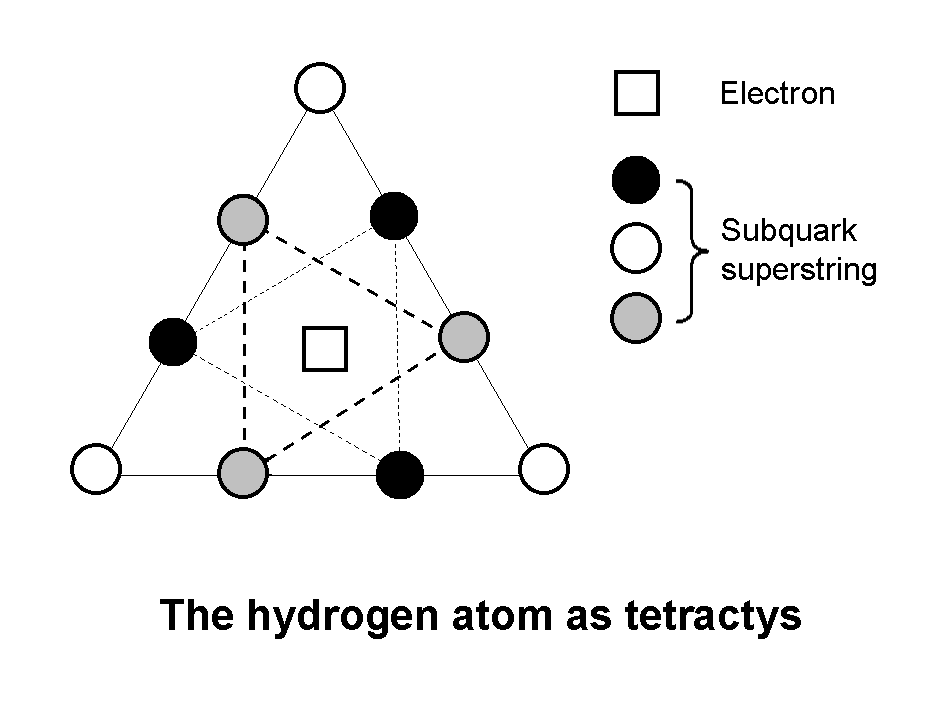
| << Previous 1 2 [3] 4 5 ...50 Next >> |

If only quarks are composed of three basic particles, the hydrogen atom can be regarded as composed of ten particles that conform to a tetractys pattern. The three corners of the latter denote three of the nine subquarks, the two triplets of hexagonal yods forming a Star of David denote the other six subquarks and the central, hexagonal yod denotes the electron. The latter is the only particle in the hydrogen atom that can exist as a free particle because particle physicists believe that quarks are permanently imprisoned inside protons and other strongly interacting particles, the so-called "colour force" between quarks growing in strength as they are pulled apart (so-called "colour confinement").
If both quarks and electrons were indivisible particles, as currently conceived by physicists in what they call the "Standard Model," the hydrogen atom would consist of four, not ten, discrete particles. This is inconsistent with the mathematical pattern of the tetractys. As the starting point and basic template for the atoms of the chemical elements, the hydrogen atom can conform to this universal, 10-fold pattern of holistic objects only if quarks are composed of three objects and electrons are indivisible particles. This is a strong argument against the assumption that quarks are fundamental (i.e., discrete) hadrons. As yet, Fermilab and the Large Hadron Collider at CERN have not provided unambiguous evidence that quarks are composite objects because they have not generated sufficiently energetic collisions between particles that would probe quark structure at the scale needed to reveal their constituents. The author confidently awaits experimental confirmation of this prediction, which would usher in a new revolution of particle physics, when the LHC attains its highest energy output of about 7 TeV per beam in early 2015.
Here is also an argument against preon models that require both leptons and quarks to be composite: if they both consisted of two particles, the hydrogen atom would consist of eight particles, which is inconsistent with the tetractys paradigm. If both consisted of three particles, there would be 12 particles in the hydrogen atom, which is also inconsistent. The tetractys pattern is upheld only if electrons are single particles and quarks are bound states of three particles. In this case, 10-dimensional space-time would then display the same 10-fold pattern as the hydrogen atom, with the dimension of time being the counterpart of the electron and the nine spatial dimensions predicted by superstring theory being the counterparts of the nine subquarks making the three quarks in a proton. Any physicist who acknowledges the power of mathematics to connect disparate phenomena needs to take seriously this argument, which proposes that the dimensions of space-time and the building blocks of the simplest atom are patterned in an analogous way according to the template of the tetractys. For students of this website, the suggestion should come as no surprise, given how the tetractys emerges as the "Rosetta Stone" that allows deciphering of the information embodied in sacred geometries.
| << Previous 1 2 [3] 4 5 ...50 Next >> |